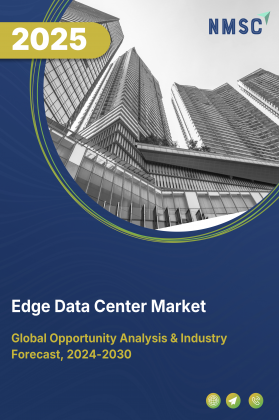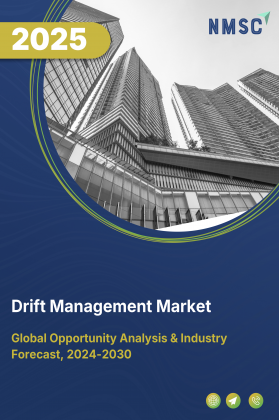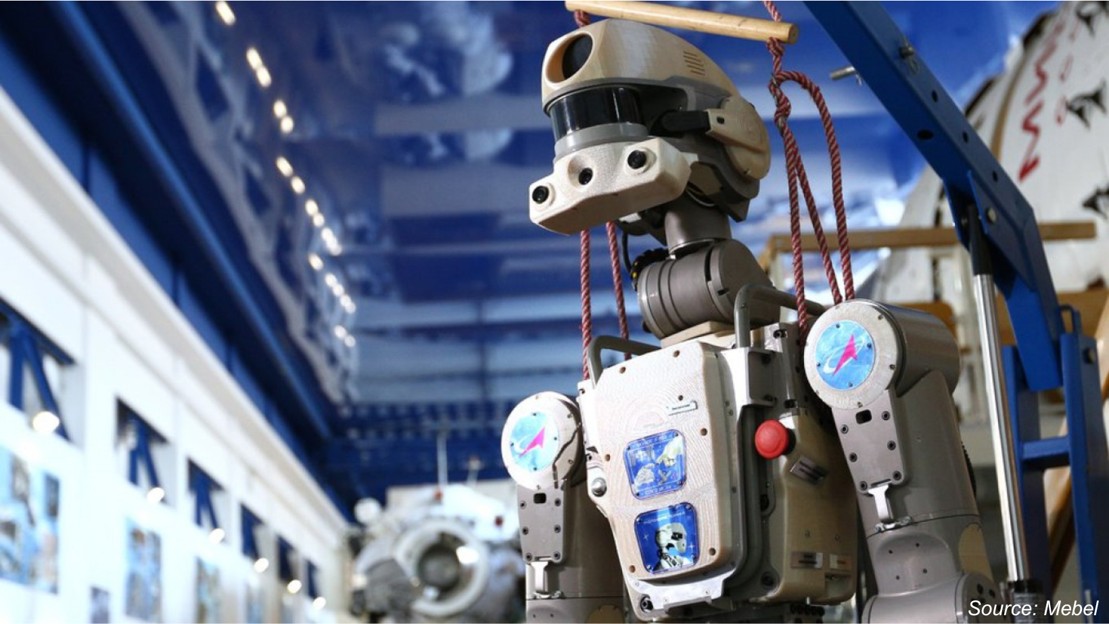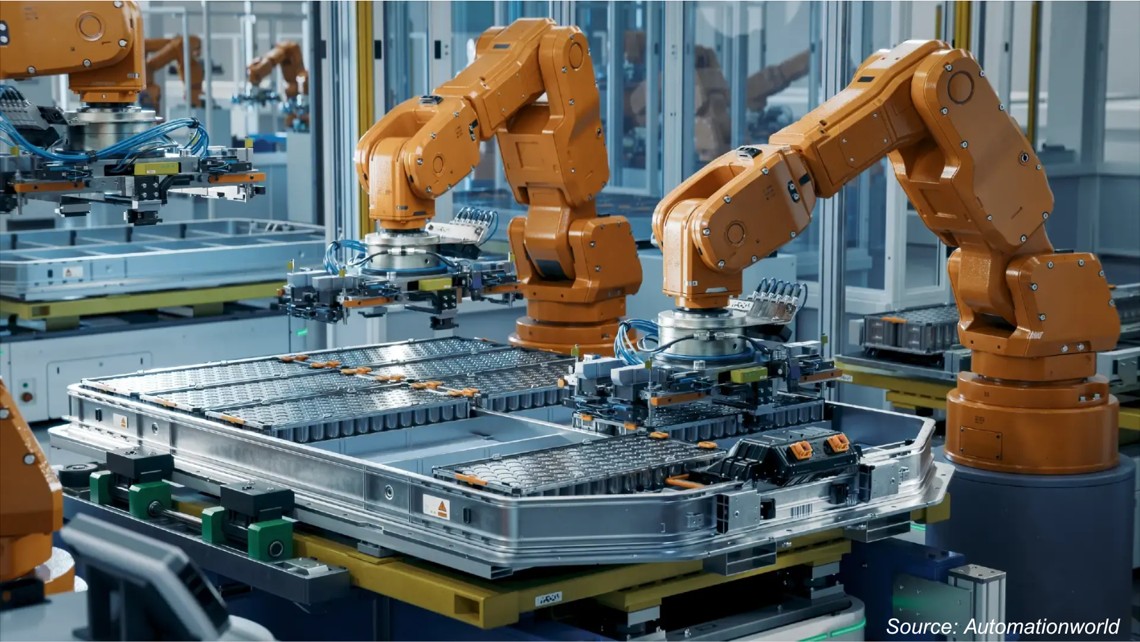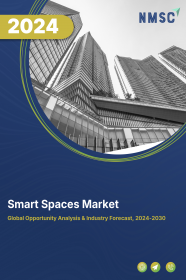
Smart Spaces Market by Component, (Hardware, Software, and Services), by Space Type (Smart Indoor Spaces and Smart Outdoor Spaces), by Application (Energy Management & Optimization, Layout & Space Management, Emergency & Disaster Management, Security Management, and Others) and by End User (Residential and Commercial) - Global Opportunity Analysis and Industry Forecast 2024-2030
Market Definition
The Smart Spaces Market size was valued at 22.66 billion in 2023 and is predicted to reach 53.42 billion by 2030 with a CAGR of 13.0% from 2024-2030. Smart spaces are physical or virtual environments where technology, data, and people interact in real-time to create an enhanced user experience. Smart spaces combine physical spaces with digital technologies, such as sensors, software, and automation, to optimize and automate operations and provide real-time insights. Smart spaces can be used in a variety of settings, including offices, homes, and cities, to create more efficient, safe, and comfortable living and working environments.
Market Dynamics and Trends
The demand for smart spaces is increasing owing to the rising green building initiatives and environmental concerns among developers along with incentivizing the use of smart technology and other energy-efficient solutions by the market players.
For instance, in September 2022, Johnson Controls, the global leader for smart, healthy, and sustainable buildings, announced to provide affordable residential energy efficiency and easily accessible for users through robust financing options and rebates.
Also, the growing technological advancement such as artificial intelligence, machine learning, and big data in various industries including aerospace and finance to gain better insights is further boosting the growth of smart spaces market.
For instance, in November 2019, Hitachi Vantara Corporation launched a new artificial intelligence (AI)-powered solution, Lumada Video Insights, for reducing airport delays. It uses lidar (light detection and ranging) technology to create a 3D model of the airport and follow passengers, equipment, and bags in real-time.
Moreover, the proliferation of connected devices enabling businesses and consumers to access and control data from their surroundings is further accelerating the growth of smart spaces market. However, the high cost of implementing smart spaces solutions along with security concerns is the major factor restraining the growth of the market.
On the other hand, the introduction of 5G technology coupled with geospatial technology such as geographic information system (GIS), remote sensing (RS), and global positioning system (GPS) is expected to create ample growth opportunities for smart spaces market in the future.
Market Segmentation and Scope of Study
The global smart spaces market is segmented on the basis of component, space type, application, end-user, and region. Based on component, the market is classified into hardware, software, and services. Based on the space type, the market is segmented into smart indoor spaces and smart outdoor spaces. On the basis of application, the market is categorized into energy management and optimization, layout & space management, emergency & disaster management, and security management, and others. On the basis of end-user, the market is divided into residential and commercial. Commercial is further sub-divided into utility, transportation and logistics, healthcare, education, retail, manufacturing, government and others. Regional breakdown and analysis of each of the aforesaid classifications include regions comprising of North America, Europe, Asia-Pacific, and RoW.
Geographical Analysis
North America holds the dominant share of the global smart spaces market and is potently expected to remain dominant in the market throughout the forecast period. This is attributed to the several initiatives taken by the governments and private sectors in the region to develop smart cities and promote the adoption of smart technologies.
For instance, in October 2022, Accelerator for America collaborated with Honeywell to launch the Honeywell smart city accelerator program such as climate resiliency, public safety, operational efficiency. It also improved service delivery to promote smart city growth in five US cities such as Cleveland, Louisville, Kansas City, San Diego, and Waterloo.
Moreover, the presence of several market key players such as Cisco Systems Inc. and IBM Corporation that are adopting strategies including product launches and acquisitions is driving the growth of smart spaces in the region.
For instance, in July 2020, Cisco acquired Modcam, a video analytics company. Following the acquisition, Cisco Meraki MV smart camera incorporated micro-level information related to motion detection and ML-based object detection to aid multiple cameras to offer a macro-level view of the real world.
Also, in June 2020, IBM launched ‘Watson Works’, a curated set of products that embeds Watson artificial intelligence (AI) models and applications to help companies navigate many aspects of the return-to-workplace challenge, which in turn boost the growth of the market.
Asia Pacific is expected to show a steady rise in the smart spaces market owing to the rapid urbanization and growing disposable income coupled with a higher focus on the development of infrastructure in this region. According to UN-Habitat, more than 2.2 billion people live in urban Asia which is equal to 54% of the global urban population and the urban population in Asia is expected to grow by 50% by 2050.
Also, the growing investment by developing countries such as China, India, Thailand, and others in this region for the development of smart cities is further boosting the growth of the market. For instance, in January 2021, the Thailand government agency collaborated with City Possible global network to develop 100 smart cities by 2024. This collaboration is a significant step towards promoting the adoption of smart technologies and creating sustainable cities in the region.
Competitive Landscape
The smart spaces market includes several market players such as ABB Ltd., Cisco Systems Inc., Siemens AG, Huawei Technologies Co. Ltd., SmartSpace Software Plc, Hitachi Vantara Corp., Iconics Inc., Smarten Space Pte Ltd., Softweb Solution Inc., and Ubisense Group Plc. These market players are adopting various strategies such as product launches, acquisition, and collaboration to maintain their dominance in the global smart spaces market.
For instance, in April 2022, Cisco introduced a cutting-edge solution for the hybrid workplace, leveraging top technologies including Catalyst, Meraki, Webex, and Cisco DNA. The SpacesSmart Workspaces aims to redefine the employee experience by providing safer, more productive, and appealing work environments by leveraging features such as interactive 3D maps, real-time occupancy monitoring, and live availability updates for meeting rooms and desks.
Key Benefits
-
The report provides quantitative analysis and estimations of the smart spaces market from 2024 to 2030, which assists in identifying the prevailing market opportunities.
-
The study comprises a deep-dive analysis of the smart spaces market including the current and future trends to depict prevalent investment pockets in the market.
-
Information related to key drivers, restraints, and opportunities and their impact on the smart spaces market is provided in the report.
-
Competitive analysis of the players, along with their market share is provided in the report.
-
SWOT analysis and Porters Five Forces model is elaborated in the study.
-
Value chain analysis in the market study provides a clear picture of roles of stakeholders.
Key Market Segments
By Component
-
Hardware
-
Software
-
Services
By Space Type
-
Smart Indoor Spaces
-
Smart Outdoor Spaces
By Application
-
Energy Management & Optimization
-
Layout & Space Management
-
Emergency & Disaster Management
-
Security Management
-
Others
By End-User
-
Residential
-
Commercial
-
Utility
-
Transportation & Logistic
-
Healthcare
-
Education
-
Retail
-
Manufacturing
-
Government
-
Others
-
By Region
-
North America
-
The U.S.
-
Canada
-
Mexico
-
-
Europe
-
The U.K.
-
Germany
-
France
-
Italy
-
Spain
-
Denmark
-
Netherlands
-
Finland
-
Sweden
-
Norway
-
Russia
-
Rest of Europe
-
-
Asia-Pacific
-
China
-
Japan
-
India
-
South Korea
-
Australia
-
Indonesia
-
Singapore
-
Taiwan
-
Thailand
-
Rest of Asia-Pacific
-
-
Rest of the World (RoW)
-
Latin America
-
Middle East
-
Africa
-
Key Players
-
ABB Ltd.
-
Cisco Systems Inc.
-
Siemens AG
-
Huawei Technologies Co. Ltd.
-
SmartSpace Software Plc
-
Hitachi Vantara Corp.
-
Iconics Inc.
-
Smarten Space Pte Ltd.
-
Softweb Solution Inc.
-
Ubisense Group Plc
REPORT SCOPE AND SEGMENTATION:
|
Parameters |
Details |
|
Market Size in 2023 |
USD 22.66 Billion |
|
Revenue Forecast in 2030 |
USD 53.42 Billion |
|
Growth Rate |
CAGR of 13.0% from 2024 to 2030 |
|
Analysis Period |
2023–2030 |
|
Base Year Considered |
2023 |
|
Forecast Period |
2024–2030 |
|
Market Size Estimation |
Billion (USD) |
|
Growth Factors |
|
|
Countries Covered |
28 |
|
Companies Profiled |
10 |
|
Market Share |
Available for 10 companies |
|
Customization Scope |
Free customization (equivalent to up to 80 working hours of analysts) after purchase. Addition or alteration to country, regional, and segment scope. |
|
Pricing and Purchase Options |
Avail customized purchase options to meet your exact research needs. |




















 Speak to Our Analyst
Speak to Our Analyst




